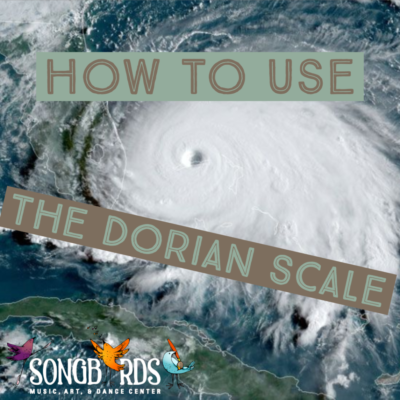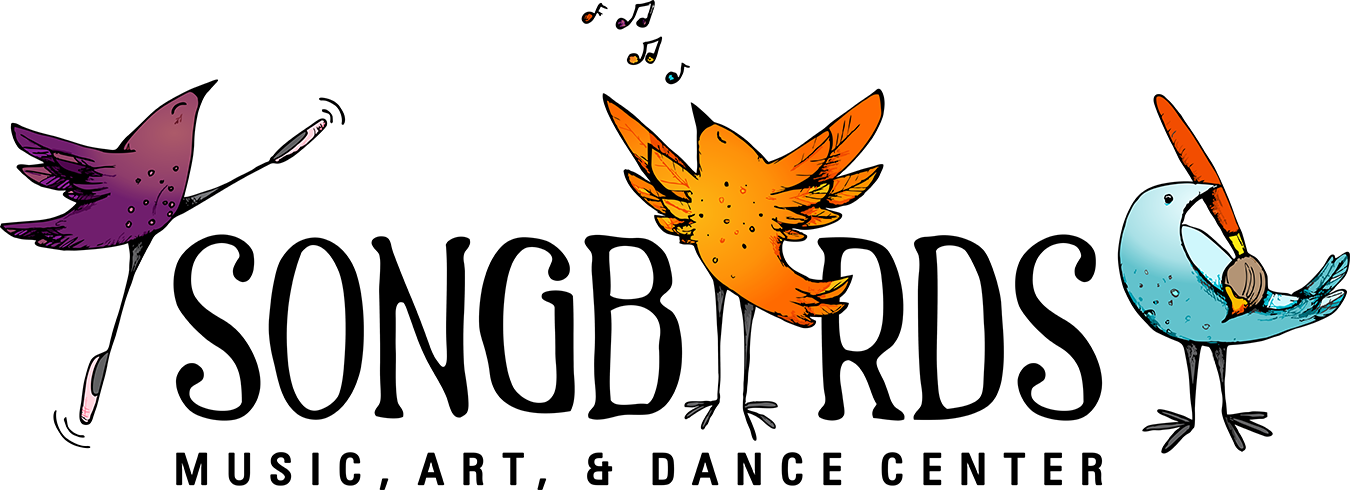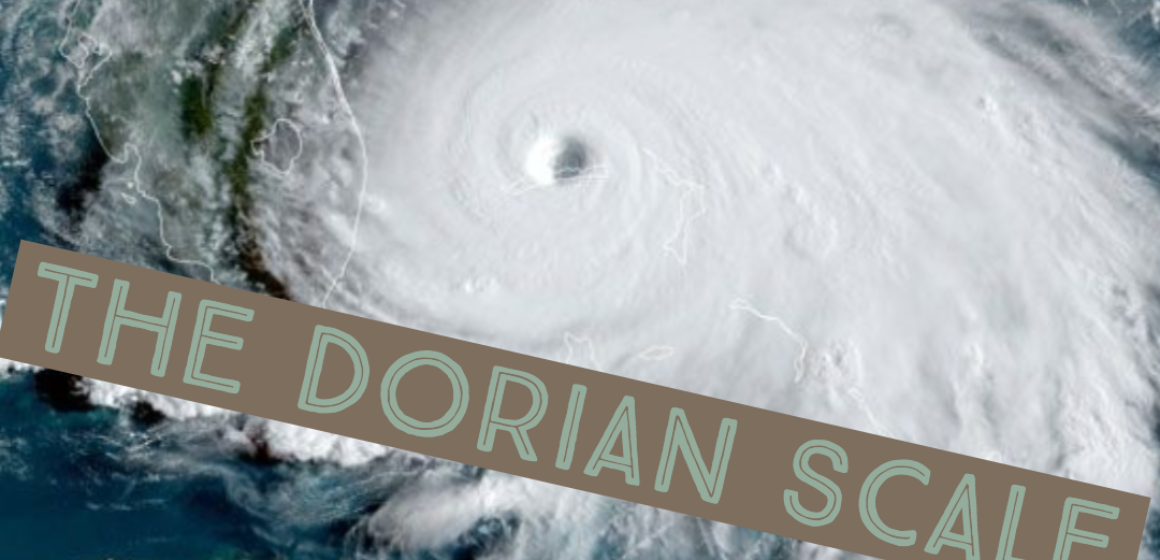As 2019’s Hurricane Dorian swirls off the coast of Florida, I thought it would be prudent to take a moment and write about the Dorian scale, one of music’s most useful, forgiving, and colorful tools. If the storm decides to move inland, us Floridians may find ourselves without power – and lots of practice time on our hands!

What are Modes?
Dorian is a type of mode (also referred to as “church modes”). A mode is just an alteration to the basic major scale. If you know how to play the C Major scale on your instrument, you know how to play all the modes! Let’s look at the C Major scale. The notes are as follows:
C – D – E – F – G – A – B – C
Dorian mode occurs when the third note and the seventh note of any scale are lowered (flattened by one half-step). That means that the C Dorian scale looks like this:
C – D – Eb – F – G – A – Bb – C
Try playing this scale on your instrument. If this is too tricky, you can find a piano and play all of the white keys starting and ending with D. This is D Dorian and is a little easier to visualize! D Dorian is:
D – E – F – G – A – B – C – D
Why Learn Modes Anyway?
Modes are extremely useful for all kinds of songwriting, improvisation, and music theory learning! Playing in a mode utilizes unusual colors that can make your music stand out. They can also help your musical skills grow in new ways! For example, the Dorian Scale is very similar to the Natural Minor Scale (also called Aeolian Mode). The only difference is that Dorian has a raised 6th note. In our C Dorian example, that means that the sixth note, A, can be lowered to an Ab to transform the scale into the Natural Minor. So, using all of our Dorian-infused knowledge, we can easily make playing over a minor chord sound extra spicy and exciting by throwing in the Dorian raised 6th note! (Give it a try, but we’ll go into this in more detail later in the article.)
The Dorian Scale is used in music every day and you might not realize it. It is arguably more popular than the Minor Scale in some genres like jazz, blues, and rock. Take a listen to these Dorian songs to get a feel for the scale: Eleanor Rigby, Scarborough Fair, Purple Haze, and Oye Como Va.
Let's Use It
Try playing these simple Dorian Chord progressions on your instrument. I’ve written them all in D, but you can easily transpose them to any key you wish if you feel confident with how the scale works.
Dm – Am – C – G
Dm – Em – C – G
Dm – Am
Dm – C
Now, record yourself playing one of the progressions using your phone, a looper device, or any other kind of reliable technology. You can also grab a friend to help you. Once that is done, you are ready to begin exploring the Dorian Scale over your chord progression. Start slowly and don’t be afraid to experiment! This exercise is all about getting your ear used to the sound and color of the mode. As a reminder, the D Dorian scale that goes with the chord progressions is as follows:
D – E – F – G – A – B – C – D
If this is too easy, try some of these progressions that sound inherently more Dorian:
Dm7 – Am7 – C – G
Dm7 – Dm9 – Dm6 – Dm7
Dm9 – Em – Dm6 – G
The Next Level
Once you have familiarized yourself with the sound and feel of Dorian, try contrasting it with the natural minor scale and the minor pentatonic scale. Dorian works well with both of them! For example, you might try improvising with the D minor pentatonic scale or the D natural minor scale over one of the above chord progressions. These scales are as follows:
D Minor Pentatonic:
D – F – G – A – C – D
D Natural Minor:
D – E – F – G – A – Bb – C – D
Then, try to switch to the D Dorian scale and notice how much the colors and sounds explode!
That's All, Folks
Try these scale exercises on for size. If you like how Dorian sounds, I suggest trying to learn another mode! There are seven in total, and you now know three of them (Dorian, Aeolian (natural minor) and Ionian (major)). Stay safe in this hurricane, and practice well!
Check out loads of other informative articles here!




